And Justice For All
By Maya Kroth
By Maya Kroth
Five years ago, Kathryn Hamoudah spent her spring break in a business suit, observing a crowded courthouse on the outskirts of Jackson, Mississippi. She and a small group of other Georgia State law students watched as a guard brought into the courtroom two African American men in orange jumpsuits, chained together at the waist.
“The deputy told them to turn around and face the wall so they couldn’t look at anybody,” Hamoudah recalls. When one of the men couldn’t hear the instruction and asked the guard to repeat it, the guard snapped, “I told you to get your nose against that wall!”
Each man was there about a minor traffic violation. Neither had been found guilty of any crime.
At first the students thought such behavior was a one-off—a bad judge, a particularly dysfunctional courtroom. But as they observed the courts that week, it kept happening, day after day: Judges comparing defendants to animals. People being tried and convicted in absentia. Public defenders nowhere in sight.
“There was no dignity,” she says. “In law school, we think about decorum, that people are treated in a certain way. And really, the people who are treated in a dignified way are people with money. It became very clear that, like most things in the legal system, it was systemic.”
Hamoudah and her classmates observed these courts as part of an Alternative Spring Break program coordinated by the Georgia State College of Law’s Center for Access to Justice. The goal: To understand how the law they were learning in the classroom was actually practiced on the ground.
“What is ‘Access to Justice’?” asked a slide projected onto the screen behind associate professor Lauren Sudeall on day one of last fall’s Law 7006: Access to Justice: Law Reform. Speaking through a white KN95 mask, Sudeall asked students to brainstorm a definition.
“Access to justice is the … ability to remedy a legal matter in an honest and humane way,” offered one.
Another student piped up: “The ability of some person, regardless of status, to utilize legal systems and mechanisms in order to bring about a just remedy to a given legal injury.”
“Being empowered to navigate the legal system,” added a third.

Access to justice “can mean a lot of different things to different people,” Sudeall explains. As the director of the Center for Access to Justice, which she founded in 2016, she’s been facilitating discussions like these for more than five years. Sudeall’s mission is twofold: To shine a light on how people who don’t have legal assistance navigate the court system, and to expose the gap between how the law is taught and how it’s practiced.
The center’s work is divided into three focus areas: research, driven primarily by Sudeall’s investigations into how courts function; education, including an award-winning pro bono program and the Alternative Spring Break; and events, chiefly the annual State of the South conference on access to justice.
Sudeall came to Georgia State with a gold-plated resume: Yale, Harvard Law, a prestigious clerkship with Supreme Court Justice John Paul Stevens. Before joining the faculty, she was a lawyer at the Southern Center for Human Rights, where she worked with individuals facing the death penalty.
“I tend not to think that people are bad, but instead that everyone has a story — and that probably comes from defending people on death row,” she says. “I knew I wanted to pursue a version of academia where my research would have real-world applications and to help tell another story, particularly in this part of the country.
“I am often drawn where it feels like people are not paying enough attention,” Sudeall continues. “The political landscape is very different here, the nature of the courts is different, and the realm of what feels possible is different.”
The center is unique in its emphasis on studying the civil and criminal legal systems. The legal profession siloes the two, but defendants are often forced to interact with both at the same time, and usually without a lawyer.
“One of my goals is to shift our vantage point, to look at these things from the perspective of the people who are actually trying to navigate [the system] without representation,” she says. “The way we’ve constructed our systems doesn’t make a lot of intuitive sense. It can be overwhelming and confusing, particularly when people are dealing with losing a home, losing custody of their children or domestic violence. In a lot of those situations, particularly in southern states, the odds you’ll have a lawyer are extremely slim.”
For one of the first projects, Sudeall and her team set out to create a map to visualize access to justice in Georgia. Produced in partnership with Georgia Institute of Technology biologist Joshua Weitz and data scientist Chad Wigington, the map showed how many lawyers and legal aid groups there are in every county, as well as other factors that can influence access to justice, such as household income, car ownership and internet access.
The map revealed that much of the state is a legal desert. Lawyers and legal non-profits are clustered in metro Atlanta, and 59 counties have fewer than 10 lawyers. Five counties have no lawyers at all. The findings led Sudeall to look closer at rural and semi-rural courts.
A lot of the existing research on courts focuses on cities, in part because that’s where law schools tend to be located, she notes. But the way courts work in big cities is very different from how they work in smaller or rural areas. For one thing, many rural courts run entirely without lawyers — including the judge.

“You can talk to judges in some of these places, and none of them have ever been to law school,” says Daniel Pasciuti, an assistant professor of sociology at Georgia State. “[You ask] how did you get this job? And the answer is, ‘Oh, I used to be the clerk, and when the previous judge retired, I decided to become the judge.”
In 2018, with funding from the American Bar Endowment, Sudeall and Pasciuti started investigating how suburban and rural courts in Georgia handled evictions.
“There’s a joke that there are 159 counties in Georgia, and 159 different ways of doing law,” says Pasciuti. Not to mention a multitude of systems for record-keeping, as his graduate researchers learned the hard way.
“There was no digital record system, so we’re physically going out there with portable scanners, sitting in closets at the back of the court, pulling out shoeboxes full of paper records and scanning each case individually,” he says.
Meanwhile, Sudeall and Pasciuti interviewed judges, clerks, litigants and law enforcement officers. The mixed-method approach offered a quantitative and qualitative explanation not just of how the courts functioned, but why things happened.
Just as they were wrapping up their research, the pandemic hit — and with it, a whole new set of concerns. The Georgia Appleseed Center for Law & Justice asked the researchers to help compile and analyze data to understand how Georgia courts were interpreting and applying COVID-related eviction moratoria handed down by the Centers for Disease Control and Prevention (CDC) and the State Supreme Court.
“Georgia is incredibly decentralized, so nobody knew what that actually meant,” Pasciuti says. “Were all courts closed? Were courts accepting cases? Were courts still hearing cases? Nobody knew.”
The resulting three-part report, “Courts in Crisis,” revealed a patchwork of responses from around the state. In theory, tenants could seek eviction protection under the CDC moratorium, but Sudeall and Pasciuti found that nearly two-thirds of Georgia courts didn’t even tell litigants about the declaration form. In the absence of a clear and consistent policy, it was nearly impossible for someone facing eviction to figure out how to stay on the right side of the law. As a result, many vulnerable Georgians weren’t protected at all. Sudeall has since secured another grant from the Russell Sage Foundation to support a new mixed methods study with colleagues at Georgia Tech and the University of Hawaii to determine how local courts in Georgia and Florida implemented state and federal emergency eviction prevention policies promulgated in response to COVID-19.
“People think of the law as a neutral, objective thing, without understanding how much room there is for subjectivity, how amorphous the law can be,” Sudeall says.
Sometimes access to justice can be improved simply by increasing access to legal representation: getting the word out about free legal assistance, for example. But Sudeall, in her research, has also advocated for the reverse: Using plain language, creating self-help tools and simplifying the system so lawyers aren’t so necessary in the first place.
“We should think of our responsibility as broader,” she says. “It’s not just ‘How are we going to get our one client access to their outcome?’ but ‘How we can provide everybody with that level of access?’”
Access to Justice by the Numbers
159
155.65
5
16.82
Sources: *Access to Justice Map (published 2017), **Eviction Lab (2016 stats)
Access to Justice by the Numbers
159
5
155.65
16.82
Sources: *Access to Justice Map (published 2017), **Eviction Lab (2016 stats)
Sudeall’s other half at the Center for Access to Justice is assistant director Darcy Meals, an Atlanta native who had been working at a law firm but was looking for a route back to the public interest work that drove her to become a lawyer in the first place.
“I always joke that if we’re a think tank, she’s the think and I’m the tank,” says Meals, who runs the center’s student-facing programs, including Alternative Spring Break.
Meals also oversees the pro-bono program, through which law students have provided more than 4,500 hours of service to about a dozen partner organizations around Atlanta. During the COVID-19 eviction chaos, 20 Georgia State students worked with Atlanta Legal Aid Society, the Georgia Legal Services Program and the Atlanta Volunteer Lawyers Foundation (AVLF) to draft demand letters to landlords, prepare informational materials on tenants’ rights and help with legal research. These efforts didn’t go unnoticed: The White House and the Department of Justice recognized Georgia State’s College of Law as one of 99 law schools that responded to the Attorney General’s Call to Action to address the twin housing/eviction crises in the U.S.
“Students are often surprised to learn that tenants in their own backyard are enduring a landlord’s illegal conduct — for example, failure to repair their rental properties,” says Cole Thaler, co-director of AVLF’s Safe and Stable Homes Project.
The center’s students offer perhaps the greatest proof of its impact.
“Taking the course definitely straightened me back out and reminded me why I came here in the first place,” says Mark Pickett, a law student who graduates this spring and recently accepted a job as a staff attorney with Georgia Legal Services Program. “I learned that there are viable career paths for people who want to help.”
Robert Evans swore he’d never go back to the small Georgia town where he grew up. But after encountering the rural access-to-justice issues raised in Sudeall and Meals’ course, he applied for and secured a judicial clerkship in rural Coweta County, which he will begin after graduating from the College of Law this spring.
In the five years since her spring break in Mississippi, alumna Kathryn Hamoudah has worked in the DeKalb County public defender’s office and plans to continue in the field.
Sudeall hopes the next five years see the Center expanding its reach beyond Georgia, with more dedicated faculty researching issues across the South. She believes it’s incumbent upon the legal profession to take responsibility for the failures of the system, since those who suffer most from those failures have the least power to effect change.
“That’s just how I’m built,” Sudeall says. “I don’t understand how you could think about it any differently.”
Photos by Steven Thackston

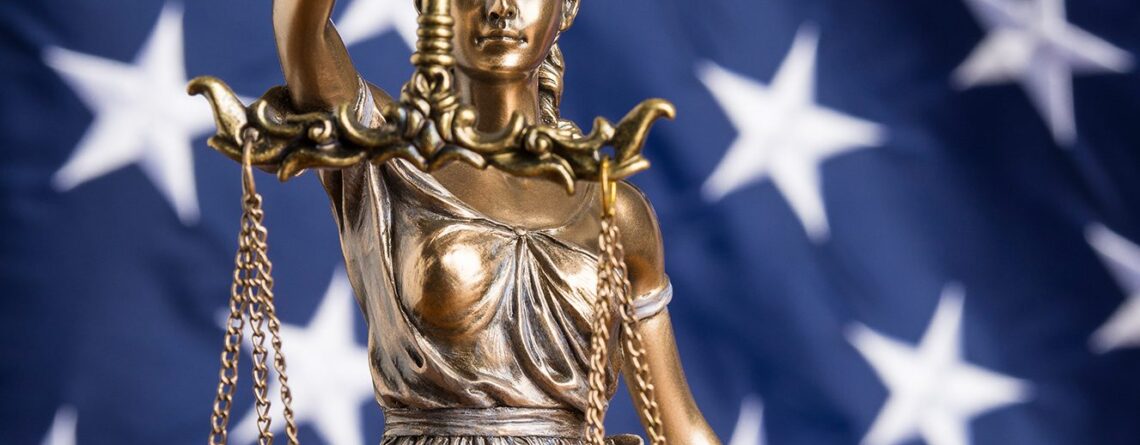

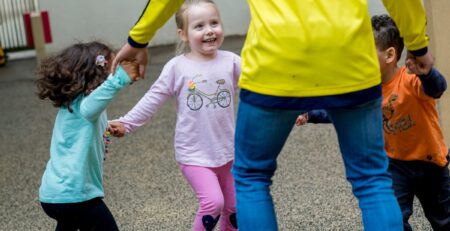
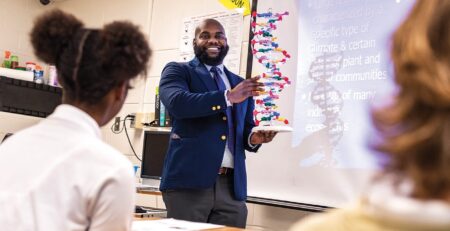


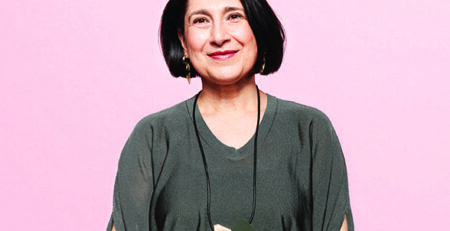
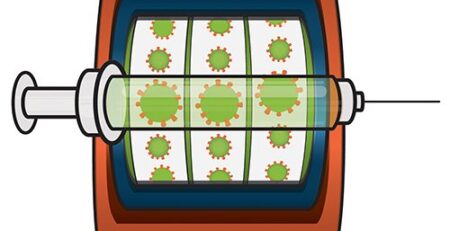
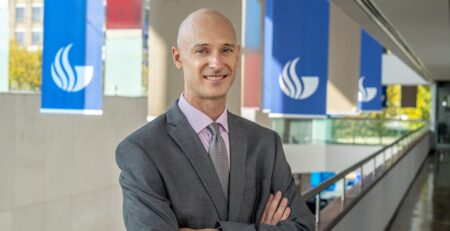
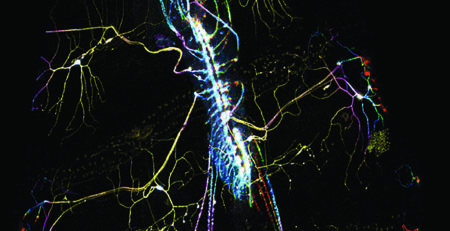
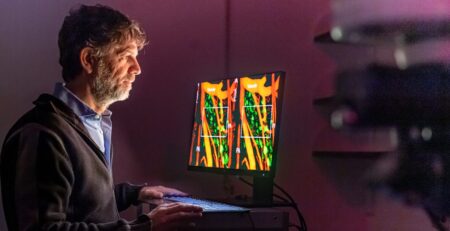
Leave a Reply